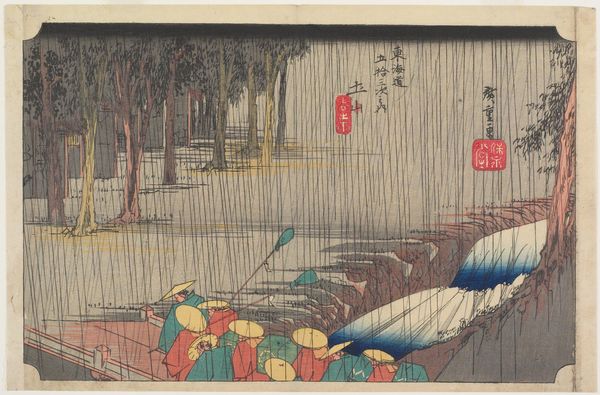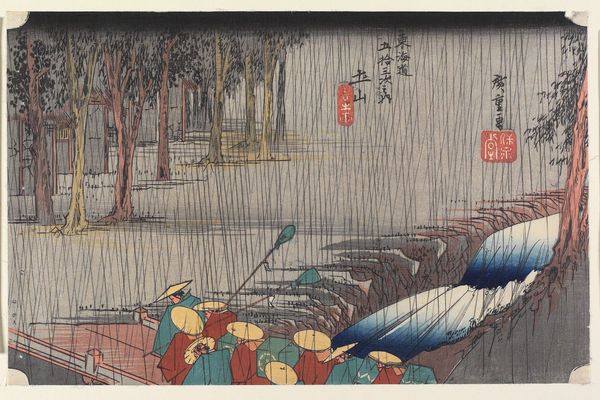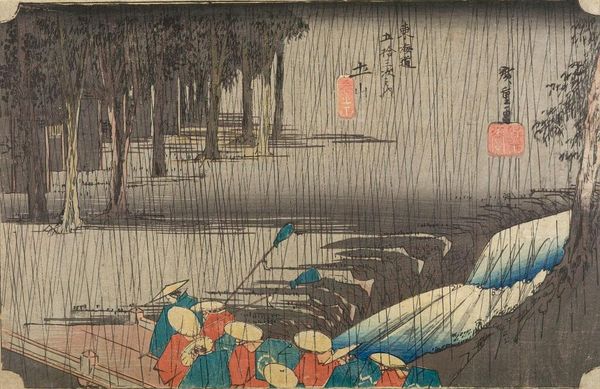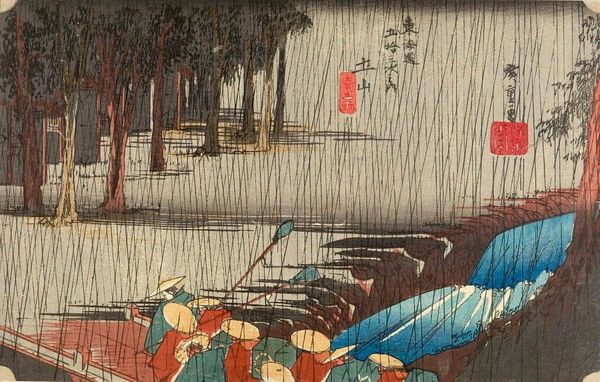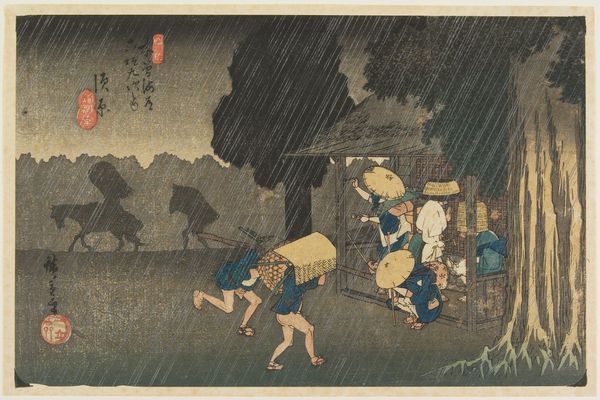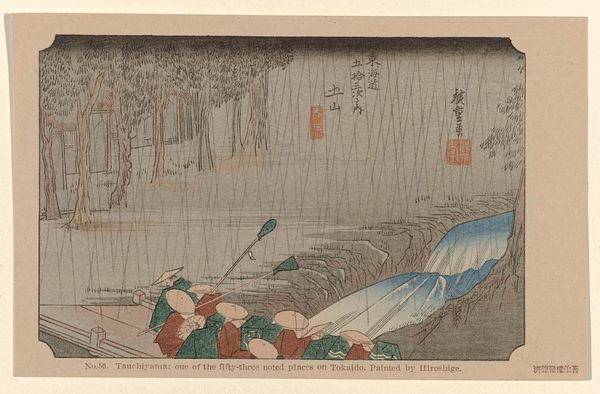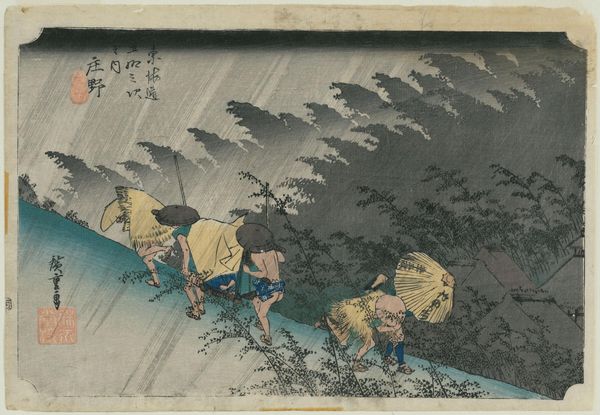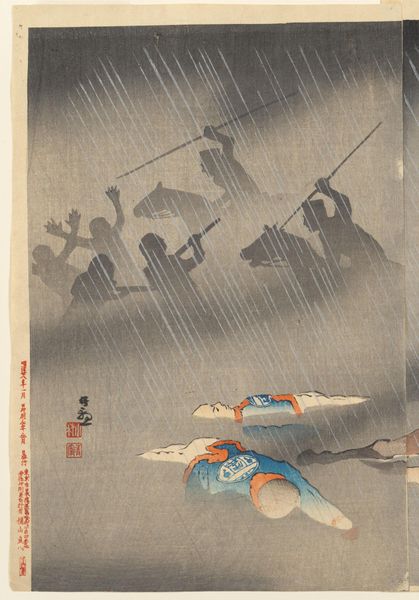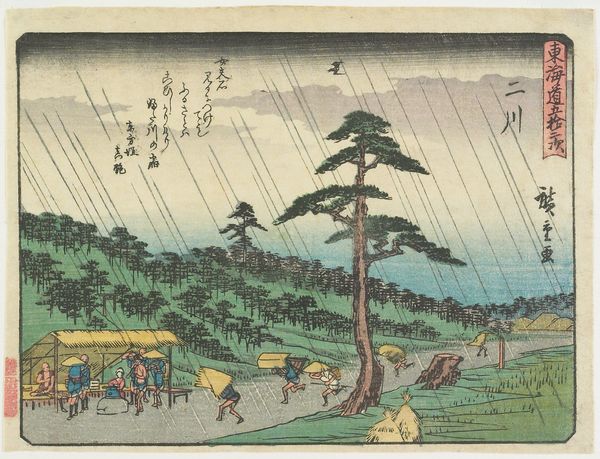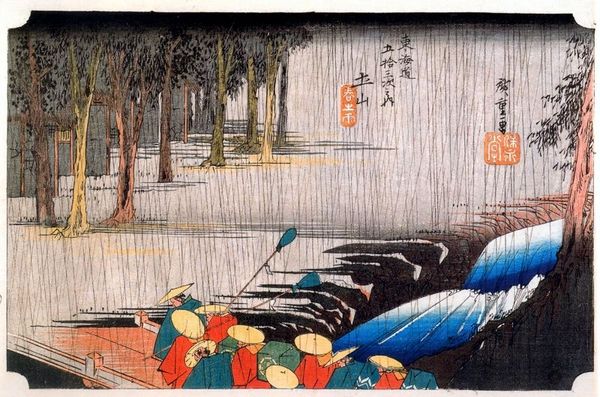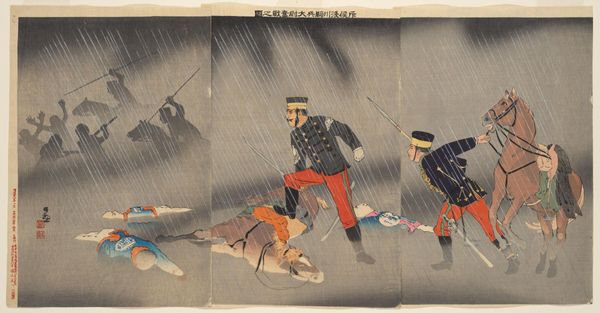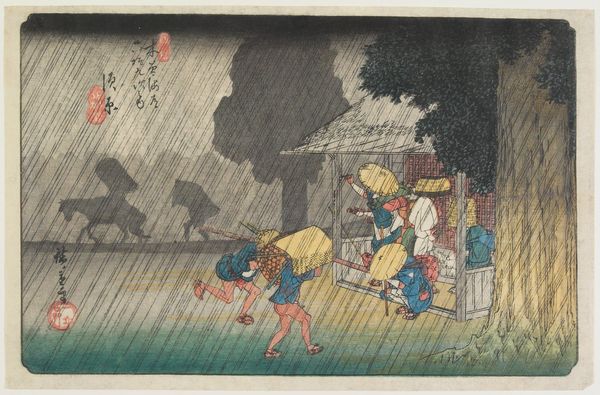
print, ink, woodblock-print, woodcut
# print
#
asian-art
#
landscape
#
ukiyo-e
#
japan
#
ink
#
coloured pencil
#
woodblock-print
#
woodcut
Dimensions: 9 3/4 × 14 3/8 in. (24.7 × 36.5 cm) (sheet, horizontal ōban)
Copyright: Public Domain
Curator: Here we have Utagawa Hiroshige’s woodblock print, "Tsuchiyama," created around 1832-1833. It's part of the collection here at the Minneapolis Institute of Art. Editor: Wow, it's quite the downpour. I can almost feel the damp chill just looking at it. The monochromatic greys really enhance the dreary, wet atmosphere. Curator: Absolutely. This piece originates from Hiroshige's series "Fifty-three Stations of the Tōkaidō," depicting scenes along the crucial route linking Edo, now Tokyo, with Kyoto. The woodblock prints were incredibly popular with ordinary citizens during that period, so consider the access and cultural perspectives present within it. Editor: Looking at the print, the lines forming the rain are so deliberate and sharp. Knowing it’s a woodblock print gives me such a heightened appreciation. The labour involved must have been significant, meticulously carving each line into the block. Curator: Precisely. And it underscores the artistry intertwined with labor. This wasn't just a commercial product; it involved specialized artisans, production processes, and hierarchies, each stage demanding expertise. Editor: We're viewing this scene through the lens of the artist's choices about composition and perspective too. The cluster of figures huddled under what looks like a blue tarp seems almost huddled for warmth despite it only being visual. They almost become a part of that artificial object and artifice too. Curator: Indeed, Hiroshige uses conventions to place the viewer in the scene, but his choice to show daily life from multiple social locations gives rise to some key points of cultural contact. As such, this composition also reinforces the cultural values assigned to travelers. Editor: Thinking about materiality, it's interesting to consider how the affordability and availability of these prints contributed to a democratization of art viewership in Edo society. Something so meticulously crafted made accessible, to the working classes in 19th century Japan. Curator: A key aspect. This connects to broader shifts in socio-economic power during the Edo period. Hiroshige's work reflects these transformations, inviting questions of cultural production and distribution of access to both wealth and information. Editor: This really does make you appreciate the value we put on visual work nowadays too! The effort of creating such work. Thank you for sharing the perspective behind it. Curator: Of course. Hopefully it helps create a greater appreciation for what it says about its society in this unique way!
Comments
No comments
Be the first to comment and join the conversation on the ultimate creative platform.
